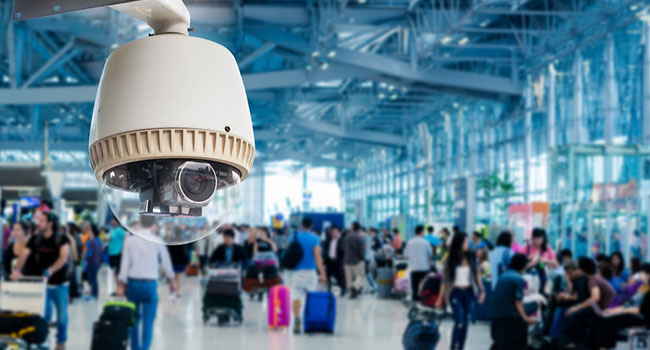
Vegas Airport to Upgrade Security Features
A new, innovative screening process was unveiled, and the Transportation Security Administration, with the help of Clark County, just proposed a grant of more than $10 million for other security upgrades.
The McCarran International Airport is taking some big steps in updating security measures – a new, innovative screening process was unveiled, and the Transportation Security Administration, with the help of Clark County, just proposed a grant of more than $10 million for other security upgrades.
Director of aviation at the Las Vegas, Nev., airport, Rosemary Vassiliadis, said the TSA proposed a $9 million grant to upgrade the closed-circuit television system, and Clark County will add “a couple of million dollars” to match for the camera upgrades.
The new system will be able to spot suspicious activity and determine whether additional response, such as law enforcement, is necessary. The new cameras will be installed at all baggage screening areas, checkpoints, Terminals one and three parking garages, exit lanes and other key areas of security at the airport; Vassiliadis said they won’t need as many as they currently in use.
“So, we’ll actually get to reduce the number of cameras we have with the upgrade because we’re getting what they call 360 cameras (can rotate around 360 degrees),” she said. “Today we have point tilt zoom, where an operator can go in and zoom in on everything manually, but this way it will be automatic.”
The project is in the planning phase, which is expected to take six to nine months. After the planning stage, the construction phase is expected to take a year.
“Cameras are an important part in these kinds of security processes, so it was a win-win (for the airport and the TSA),” Vassiliadis said. “Overall it improves safety, and that’s important.”
At the end of August, the airport began testing the new screening process, called Automated Screening Lanes. TSA officials said the new process will speed up the screening process by 30 percent.
"The ASL screening process offers a number of unique features which improves both passenger screening and passenger experience," said TSA official, Steve Karoly.
During the process, a TSA agent will usher fliers to divestiture points where they will place their belongings in a bin, then push it forward and continue with the screening. Sounds familiar, right? But the new divestiture points will allow people who move quickly to get through the process faster because they don't have to wait for people in front of them to finish.
ASL also takes pictures of bags before they go into the X-ray. TSA officials said the photos will help their officers identify the bag as it goes through the X-ray process.
"It's another assurance that we have the right bag," Karoly said.
Each of the bins also has a scan tag so TSA officers can keep track of what is in each bin. Another bonus, you no longer have to wait for the bins. Once a bin is emptied at the end of the screening process, it continues on a conveyer belt back to the people waiting in line to be screened.